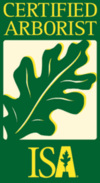Plant Health Care Services in Boise, ID
From pest infestations to environmental stressors, structural damage to girdling roots, PHC can help identify the root cause and find a holistic solution.
Plant health care (PHC) is a proactive, holistic approach to keeping your trees and landscape healthy year-round. At Tanager Tree Service, our certified arborists offer comprehensive plant health care in Boise, addressing everything from insect infestations and diseases to nutrient deficiencies and structural issues. Whether it’s diagnosing root rot, treating pest problems, or assessing environmental stress, our PHC programs are designed to promote long-term vitality. Through routine monitoring and expert tree health assessments, we identify early warning signs and apply customized solutions to prevent serious damage. Keep your landscape thriving with professional plant health care that protects your investment and enhances your property.
Common Problems
A tree should be planted only as deep as its root flare. If part of the trunk is underground, it can encourage girdling root, a situation in which roots coil around the base of the trunk. This will reduce the supply of minerals and nutrients to the tree and compromise tree health over time.
Girdling roots occur when roots circle around the trunk of a tree as it grows, instead of extending laterally away from the trunk. When left unchecked, they can choke off areas of the trunk or other roots, leading to decay and tree failure. Proper planting and cutting these roots as they develop are the best ways to address this issue.
Boise has a dry climate and most of our trees would not survive without supplemental irrigation. Trees prefer infrequent, deep/long soaks. The best way to see if you tree is getting enough water is to dig down about 2 inches. Your soil should be moist. If it is dry or saturated, adjust the amount of water accordingly.
Chlorosis indicates a nutrient deficiency in your tree, usually iron. It presents as a yellowing of leaf tissue. When the soil pH climbs above 6.5, iron becomes insoluble to plants. Mitigation can include trunk injections of iron or steps to help lower the pH of the soil.
Aphids are small sap-sucking insects that commonly infest Ashes and River Birches. They can be identified by the “honeydew” they secrete that often leaves a sticky residue under a tree. Aphids are a secondary problem, meaning they only attack trees that are stressed. Identifying the root cause can help your tree fight them off without resorting to chemical treatments.
Sunscald is the result of sun damage to the bark of a tree. It occurs primarily on south facing areas and appears as physical damage to the bark. Wrapping the trunks of young trees and not over-thinning when pruning can help prevent it. It is also helpful to minimize materials around the tree that reflect the radiation of the sun, such as decorative rock.
Adding organic material to your soil every year helps to protect and improve your soil over time. This will help counter soil compaction, erosion and improve the topsoil.
Preventative pruning can reduce the need to make large cuts that introduce decay on a large scale and can compromise the structural integrity of the tree over time. Making large cuts to the base of a tree creates a wound that the tree will never be able to fully compartmentalize, allowing decay to spread.
Anthracnose is a common fungal disease that results in leaf spots, curling of leaves, early leaf drop and the death of new growth. In Boise, this mostly effects American Sycamores and can be treated by pruning out the effected areas, as well as chemical applications.
Fire blight is a bacteria that affects apple, pear and Hawthorne trees. It causes new growth to die back, turn a dark brown or black color, and produces cankers on the trunk. If caught early, it can be pruned out with minimal effort.
Schedule a Tree Health Assessment Today!
Get expert insights from our certified arborists—book your plant health care consultation now.

